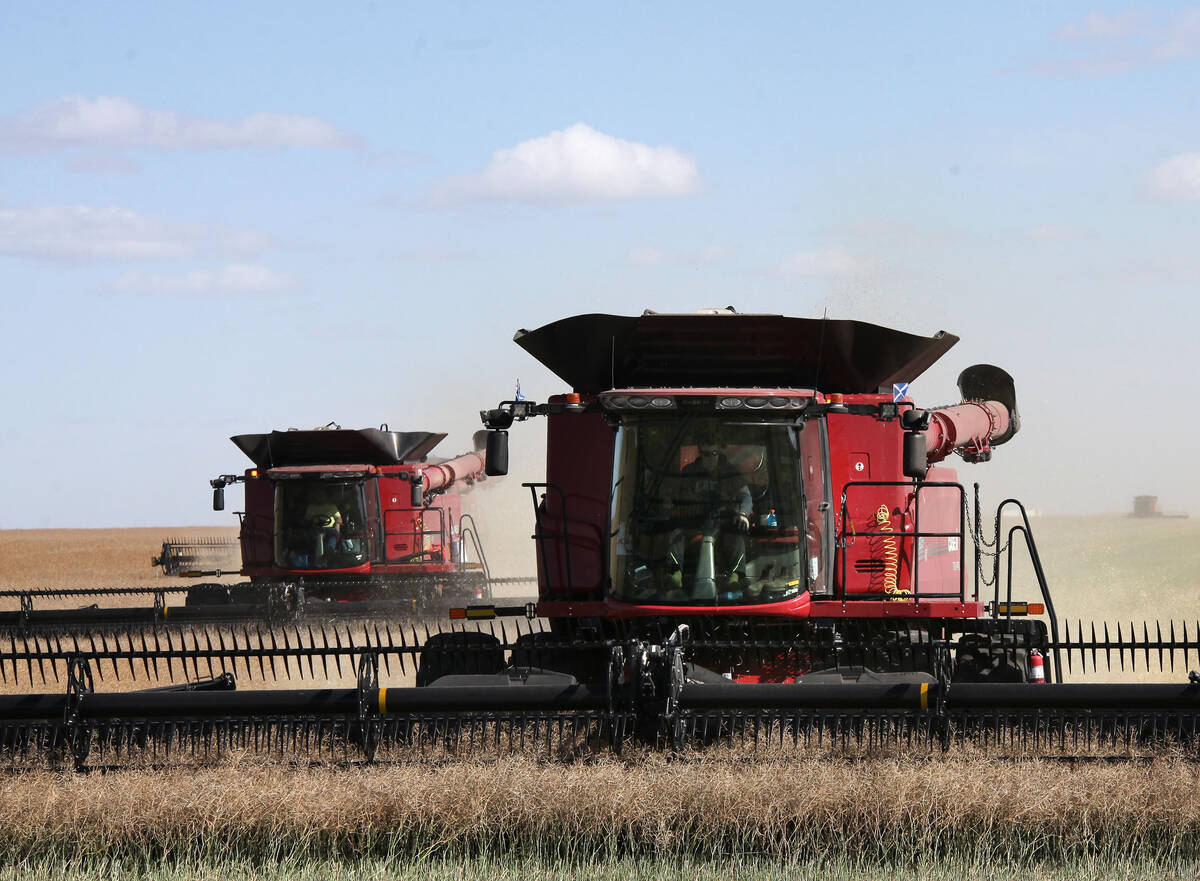Glacier FarmMedia | MarketsFarm — Precipitation varied across Manitoba during the week ended Sept. 22 with some areas receiving more than 200 millimetres. Despite the rainfall, the province’s harvest advanced to 58 per cent completion, three points more than the previous week, according to the government’s weekly crop report released on Sept. 24.
Winter wheat and fall rye have already finished their respective harvests, while the field pea harvest was at 99 per cent complete as of Sept. 24. Spring wheat and barley were at 90 per cent complete, while oats were at 88 per cent. Canola was 55 per cent combined, while dry beans were at 25 per cent.
Read Also

Notable changes in exports to China, India
China and India figured prominently in the September export data issued by the Canadian Grain Commission on Nov. 7. For the most part, the CGC’s numbers highlighted issues with grain, oilseed and pulse exports from licensed facilities to those countries.
Spring wheat yield estimates ranged from 60 to 90 bushels per acre, with quality ranging from 65 per cent good to excellent in the southwest region to 80 per cent in the northwest and central regions. Oat yields ranged from 80 to 180 bu./ac., while barley was at 90 to 115 bu./ac. Corn crops were approaching physiological maturity with cobs in the dent growth stage and milk lines moving down kernels.
Canola yields vary across Manitoba from 25 to 65 bu./ac., with the harvest most advanced in the central region at 70 per cent and an average of 45 bu./ac. Early-seeded sunflower fields moved into the R9 stage with later-seeded fields in the R8 stage. Overall crop conditions were considered good. Flax fields were in growth stage 12 with pre-harvest herbicide applications complete and harvest operations beginning.
Soybean yields range from 500 to 3,500 pounds per acre with good quality. Meanwhile, soybeans in all regions were in the R7 and R8 growth stages. Harvest operations have already begun in some parts of the province.
Most hay bales were collected, while corn silage is underway at 50 per cent completion and yields ranging from six to 10 tonnes per acre for dryland. Early season moisture has allowed for greater forage and pasture growth compared to last year.
While grass growth appears to be slowing down on pastures, those that are well-managed looked good for this time of year. Some producers supplemented animals with hay on pasture. Water levels in dugouts remain adequate, as some have recharged after heavy rainfall in some areas. The alfalfa seed harvest has started with above-average yields, while the greenfeed harvest was complete. Rains have greened up perennial weeds and fall fertilizer applications have begun.















